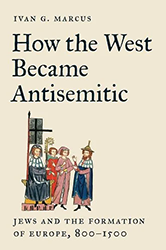At first blush, it feels like somewhat of a disservice to both Chana Blankshteyn’s prose and Anita Norich’s fluid translations to focus on the history surrounding this recovered collection of Yiddish modernist storytelling. But the existence of Fear and Other Stories is a miracle; there is no way to separate Blankshteyn’s narratives from the context in which she wrote — and what could have happened to her work after the war.
“Everything about this collection of nine stories, originally written in Yiddish, is remarkable,” Norich writes in the introduction. “Including the fact that it exists at all.” Fear was published in Europe in 1939, just a few weeks before the Nazis invaded Poland and two weeks before Blankshteyn’s death. Thus, as Norich notes, her writing features no death camps nor deportations, no whispers of the Final Solution nor survivors. But neither is it free from antisemitism, questions of assimilation, and fears of oblivion. “The contemporary English reader encounters these stories with knowledge of a history Blankshteyn could not have imagined,” Norich writes. “It is ironic to think of her death as something of a blessing that spared her from the fate of her native Vilna’s Jews and let her die in her bed.” It is with this echoing sentiment that the reader dives into the collection.
Blankshteyn’s characters and scenes transport the reader to a way of life on the cusp of transformation — in both exhilarating (and just as frequently frightening) ways. There is a dreamlike quality of her writing that allows mundane and everyday settings to evoke discomfort and admiration in equal amounts. Perhaps most urgently, Blankshteyn offers a glimpse into the world of Yiddish-speaking women, articulating common themes of romantic relationships, the capacity for advancement, and poverty through the lens of firsthand experience.
Much promotion around this collection’s release focuses on the rediscovery of Blankshteyn’s work as a “forgotten” writer who experienced a kind of double-bind. Was Blankshteyn’s work nearly lost to the ages because she was a Yiddish writer, working on the eve of the Holocaust? Or was her work shunted to the side because of her sex and gender? The truth likely lies somewhere in the middle.
Fear and Other Stories is an excellent introduction to a world of women’s Yiddish literature — much of which remains inaccessible. This collection is inspiring, and should encourage a deeper dive into surviving archives for those writers whose work remains unknown for now.
Justine Orlovsky-Schnitzler is a frequent contributor to the Jewish Women’s Archive and Lilith magazine, living and working at home in the South.





